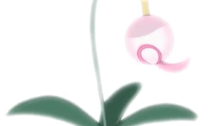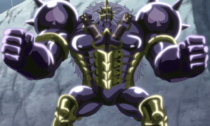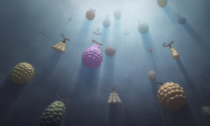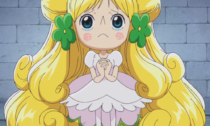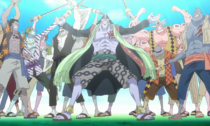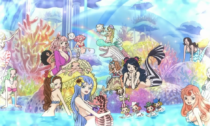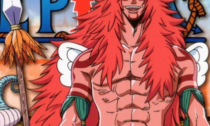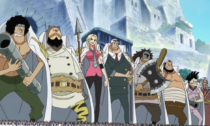Fruit User
Fruit User
Devil Fruit (悪魔の実, Akuma no Mi), called Cursed Fruit (pronounced with two syllables) in the 4Kids English dub, is a mystical fruit that can give the eater many kinds of strange and interesting abilities depending on the fruit and its type. There are some seen only in the anime or only in the manga.
| I once heard that all the Devil’s Fruits are the Sea Devil’s incarnations. If you eat one you’ll gain a special ability, but you won’t be able to swim. |
| — Shanks speaks to Buggy on Devil Fruits. |
About
The Devil Fruits as described by Morgan
Devil Fruit are said to be the fruit of the Sea Devil and that the secret to their power is hidden in the Grand Line. Because encounters with them are rare (especially outside the Grand Line) a number of rumors about them have risen making it difficult to tell whether some things are fact or fiction. The average person knows nothing or very little about what they are. Because of their power, if sold they can expect to reach well over #100,000,000 and Devil Fruit users themselves are sold at market prices as slaves. There are more than 100 types of Devil Fruit.
One running theme with Devil Fruits, however, is the fact that they taste unimaginably horrible, to the point of making it seem like the eater had taken poison. The Devil Fruit, when consumed, gives the consumer a power or special trait though they won’t immediately become aware of. They come in different shapes, colors, and all Devil Fruits have swirl marks on them of some kind. There can be only one of each type of fruit at a time. Only one bite is needed for the user to gain the power of a Devil Fruit, after which the Devil Fruit becomes a simple, useless, disgusting fruit. Swallowing the fruit whole, as Buggy did, has the same effect, peeling off the skin and eating it piece by piece also works.
Devil Fruits are the origins of the powers of some of the strongest people in the world, such as Marine Admirals, Shichibukai or Yonkou.
Identification
| We can figure out the name of a fruit by the power it gives, but the kind of power we get is completely up to chance. |
| — Kaku on his and Kalifa’s unidentified Devil Fruits. |
There is a book in the Grand Line with Devil Fruits listed (although sometimes a Devil Fruit is said to had been unidentified). The most notable example is Blackbeard in his search for the Yami Yami no Mi. Catalogs and a book were also mentioned by Spandam and Sanji. Shanks and his crew already knew Luffy’s Devil Fruit was the Gomu Gomu no Mi (Gum Gum Fruit in English versions) before he consumed it.
While it hadn’t been yet explained how to acquire that knowledge, according to Oda in a SBS, the same power of a Devil Fruit can exist more than one time (but not at the same time). Spandam mentions briefly that Devil Fruits have an aura around them which can often help identify them and that the two Devil Fruits he supplied to Kaku and Kalifa contained an unknown aura.
Side Effects of Devil Fruits
With this new power comes a weakness: the sea rejects the new Devil Fruit user and they become helpless while submerged in water (or “becomes a hammer,” in Japanese parlance). Oda stated in SBS that Devil Fruit users are susceptible to all types of water, not just seawater. He elaborated on this, saying that “moving” water, like rain or waves, does not weaken Devil Fruit users, while standing water does.
If a user is not completely submerged, they can still use their powers from the parts of their body that are above the water. This was demonstrated by Kalifa, who was still able to produce bubbles from the parts of her body that were not under her bath water (although, as stated by Nami, this had effectively cut her strength in half while in the water). However, if the user’s body has been permanently altered by the fruit, then the user’s ability can be manipulated by outside sources; i.e., when Luffy was knocked into the pool at Arlong Park, Genzo and Nojiko dove underwater and stretched his neck so his head would be above water. Being weak against the sea proves deadly to many Devil Fruit users who are pirates and Marines sailing the Grand Line.
Sea stone, a special substance that emits the same energies of the sea, can also cancel out Devil Fruit powers through physical contact with the user. Depending on how much physical contact the users has with the Sea stone, their movement may also be weakened.
One rumor, as recounted by Cipher Pol’s Jyabura, is that Devil Fruits house actual devils that will fight when placed in proximity of one another. The resulting battle would destroy the users’ bodies. Nevertheless, Blueno contradicted this claim, stating that Grand Line scientists have noted that the phenomenon of one’s body destroying itself only occurs when one consumes two Devil Fruits.
Consequences of Consumption
| Regardless of the type of power, it all depends on how you use it. The chances of you weakening from it are very low. Besides, being a hammer isn’t much of an inconvenience. |
| — Rob Lucci on Devil Fruit power. |
The main attraction to eating a Devil Fruit is the powers bestowed upon the user with many spending their entire lives seeking out just one type of fruit. More often than not the power is far more useful than never being able to swim again. However, due to lack of information known by most, and with Devil Fruits still unknown, the average consumer plays Russian Roulette consuming one and there is no way of changing what power you get once consumed. With no way of removing the curse all Devil Fruits users are labeled as “freaks”, “Devils”, and “monsters” for the remainder of their lives. All Devil Fruit users have to be trained to a certain degree from simple activation control to full battle techniques.
| You could sell ’em for hundreds of millions. But one bite might leave you with a lifetime of problems you know!? |
| — Jyabura‘s warning to Kalifa and Kaku. |
Another problem with the Devil Fruits is that a few of them offer “weird” or “useless” powers. While many citizens can be fascinated by their powers, others may leave a consumer leading a miserable life full of discrimination from those around them. Certain societies who are blind to the existence of Devil Fruits usually are told lies regarding the reason behind their strange abilities, keeping secrets but commonly causing misconceptions on how this power was achieved.
Research
Doctor Vegapunk, a Marine Scientist, is responsible for the research into the effects of Devil Fruit and Sea stone heavily. His research has also led him to devise the method that lets an inanimate object (such as a gun or a sword) gain the effect of a Devil Fruit (it has not yet been shown how this is done).
Tony Tony Chopper created, during his five-year apprenticeship under Dr. Kureha, a drug called “Rumble Ball” that enhances the effects of the Devil Fruit. Thus far he is the only one so far shown to have consumed it. According to him the Rumble Ball disrupts the wavelengths of Devil Fruit forms. It is implied that the “Rumble Ball” will activate when consumed by any Zoan type Devil Fruit user, albeit with different but slightly similar effect.
Types of Devil Fruit
Paramecia: The most common of the three classes, users of Paramecia Devil Fruits gains super-human physical abilities. Other users can alter features of their bodies or their environment. Finally, there are some users than can manipulate and generate some kind of substances.
Zoan: The users of Zoan class Devil Fruits gains the ability to transform into an animal (and acquire every ability affiliated with the said animal). The user can also transform into a human-beast hybrid form. There are Zoan Devil Fruits not only for common animals, but for prehistorical animals and mythological creatures as well.
Logia: The rarest of the three classes, users of Logia Devil Fruits gains the abilities to manipulate and transform themselves into an element. They also gain every ability related to that element and gains the skill to regenerate every part of their bodies (even their whole bodies) from that element.
For More Info on Fruit user powers see the Power creation section and the Fruit List
Smile
Smile is a completely artificial version of Devil Fruit crafted in labs with a chemical called Sad, this allows multiple versions of the same devil fruit to be created, and however the effects of the crafted fruits are still a mystery at this time. These are a recent creation in the world.
While eating Smile will grant a player devil fruit abilities it is believed that they are limited or may cause harm over time to those that eat them. It’s up to the GM at this time as to how t proceed with Smile.
Starting powers
Once a player eats a devil fruit they gain one power with 3 uses a day for free (equal to 15 build points). In addition the player also gains a quote always active power of their fruit. This can be like a higher ADS, or weak ability that they can use at will freely at any time such is the case for Logia and Paramecia this is their choice. Yet for Zoan they get two powers to use freely, one to shift from their normal form, to their beast form, and a half way point between them. This requires a control shape skill check to shift to forms outside of the regular form they are in, and the other power Zoan’s get is fast healing equal to ¼ their level.
How Devil Fruits work in this game
A player with a devil fruit has access to a unique system of powers, when any player builds powers they use build points to new power creations within some reasoning such as a weapon’s style or arsenal of ammunition, player’s skills or abilities and such. With devil fruit they can reach beyond this and have magic like abilities based on the fruit that they ate, additionally a player will gain one ability / power for free when eating a fruit but suffer from the following issues.
Player cannot longer swim PERIOD; it doesn’t matter if the player could breathe underwater before, they will drown after eating a devil fruit. When in water the player becomes effectively paralyzed all over for a period of 1d4 rounds out of water.
Salt Water causes the target to be fatigued. A player in salt water, (up to their stomach) becomes severally exhausted and unable to due major actions, they need 1d10 rounds out of the salt water to be restored to normal.
Sea Stone, Sea stone has the same effect as Salt Water and will cause the player to be severely exhausted, till the stone is removed for 1d10 rounds. These stones are mostly mined, controlled and in the hands of the world government.
Fruit List
Devil fruits in game can come from one of three results. Lugia, Paramecia, and Zoan. The three types are rolled by the GM by making a chart of 6 different fruits that are then asked by the player to roll a d6 and that is the result. If the fruit is acquired in game it’s up to the GM on the fruits look. The fruits while looking like actual fruit display a pattern and/or odd color scheme then a normal fruit of its form. Below is a listing of types based under the 3 divisions of types? While some in the series have powerful fruits it is to be noted that there seem to be a lot of similar fruits like fire types are quite common in the anime and manga. Once a character dies the fruit returns to the list as available but it’s a difficult one thus if it comes up its up to the GM to accept it or to re-roll it.
The Following are the steps to roll up a fruit.
Step 1: The GM rolls 6 fruits on the list below using a 1d10 (1 -2 – Logia, 3 -6 Paramecia, 7-10 Zoan)
Step 2: Following the type of fruit roll on their section to get the category of fruit
Step 3: Now we know the listing and type, now we roll to determine the actual fruit
Step 4: have each choice placed on a note or hidden from the players view and have them roll 1d6 to see which of the 6 choices they get. It is not advised to give them the fruit they want. The concept is to leave it as a power gamble.
Logia Fruits
With these fruits, the user will become a natural element completely. The users are neither human nor element when they are in their normal state. Logia fruits have major and minor based fruits based off the same elemental control roll 1d12. This is just a small listing more fruits can be created as long as they have a unique or strangle use.
- Fire (roll 1d8)
Minor Fruits
01 Spark – Create sparks from nothing
02 Flame – create flame from nothing
03 Burn – Touch burns at high temps
04 Steam – Creates steam from nothing
05 Ignition – can cause things to ignite
06 Lava – Creates molten rock from earth
07 Fire – creates fire from nothing
08 Inferno – can cause things to become a large fire
Examples in series:
Flare Fruit [Portagrace D. Ace] ~ Dead / [Sabo] – can turn body into living and controlled flame.
Volcano Fruit [Admiral Akainu] – Can turn body into living and controlled lava
Heat Fruit [Don Archino] – can increase the temp around himself
- Water (roll 1d8) note no seawater power exists due to effect fruit users
01 Bubble – can create bubbles from nothing
02 Squirt – Body can shoot out blast of water
03 Rain – can call forth storms of rain fall
04 Wave – can control water to form waves
05 Water Spout – Can call forth cones of water from nowhere
06 Tsunami – Can create massive waves of water
07 Liquid – Can turn body to a liquid form
08 Flood – Can bring forth massive storms and control the waters movement
Examples in series:
Liquid Fruit: Form Slime [Queen Honey] – can change body into a slimy liquid
- Air (roll 1d8)
01 Wind – Can cause the wind to below in directions
02 Dust – Body can take a dust form
03 Cloud – Body can take on a form of cloud
04 Mist – Can create and move through mist
05 Vacuum – Can create a vacuum drawing things towards you
06 Gust – Can create blasts of wind
07 Twister – Body can become a massive swirling wind
08 Tornado – Can create and control tornado’s
Examples in series:
Plume Fruit [Smoker] – Can take the form of smoke and control its movement
Typhoon Fruit [Monkey D. Dragon] – Can call forth Hurricanes and ride their winds
- Earth (roll 1d8)
01 Stone (multiple versions based off of stone types) – control over stone
02 Ground – control over the ground, they can shift or alter it as they wish
03 Gollum – Create and control creatures of earth and stone
04 Poop – body form and Control over Poop
05 Slurry – body form and Control over slurry
06 Soil – control over non rock type earth
07 Earth – Control over all kinds of earth
08 Mountain – Create Mountains out of nothing
Examples in series:
Mud Fruit [“Wet Haired” Caribou] – Body can take form of Mud
Quake Fruit [White beard] ~ Dead (Marshal D. Teach) -Create Earthquakes
Sand Fruit [Crocodile] – Body form and control over sand
- Wood (roll 1d8)
01 Wood – control over wood
02 Flower – control over flowers
03 Pollen – Body can become pollen
04 Paper – Body can become and control over paper
05 Plant Body – Body takes on plant based form
06 Seed – Control and creation of seedling plants
07 Plant control – Control over plant life
08 Forrest – Control and Body form of Trees and all plant life in a area
- Lightning (roll 1d8)
01 Battery – The ability to absorb and slowly release electricity
02 Shock – The ability to shoot shocks of electricity
03 Lighting Bolt – The ability to call forth lightning bolts
04 Lighting Ball – The ability to create bursts of electricity
05 Wire – The ability to traverse through electrical devices
06 Charge – Body form of electricity
07 Storm – The ability to create and control thunder storms
08 Thunder – the ability to call forth sonic blasts of Thunder
Examples in series:
Rumble Fruit [Enel (Eneru)] – Body form and control over Electricity
Magnet Fruit [Eustass Kidd] – Control over all things metallic
Combo Fruit [Brindo – Red] [Kanpahino-Blue] – the ability to be magnetically connected to each other
- Ice (roll 1d8)
01 Chilly – control a drop in temps
02 Frost – create ice from nowhere
03 Freeze – Body form of ice
04 Dry Ice – Create cold so strong it burns flesh
05 Snow – create snow from nothing-
06 Winter – Body form of ice and drop temps
07 Glacier – Create huge blocks of ice from nothing
08 Blizzard – Body form of Ice and create snow storms from nothing
Examples in series:
Ice Fruit [Aokiji] – Body form and creation of ice
- Shadow (roll 1d8)
01 Shadow control – able to control shadows and their users
02 Shadow Stealing – able to possess a shadow and thus their body
03 Shadow walk – able to travel through shadows
04 Shadow Body – Body form of living shadow
05 Shadow Form – Body form of a living ghost
06 Gravity – Control over gravity
07 Dimension – Creation of void spaces from nothing
08 Black Hole – Body form of a black hole
Examples in series:
Shadow Fruit [Gekko Moriah] ~ Dead – Body form, capturing and control of shadows
Darkness Fruit [Marshal D. Teach] – Body form and creation of black holes
Ghost Fruit [Perona] – The creation and control over ghosts
- Light (roll 1d6)
01 Illusion – creates and controls illusions
02 Flash – Creates bursts of light
03 Explosion – Body can cause explosive bursts
04 Fire Works – creates explosions of light in bursts
05 Neon – Control over light in an area
06 Sun – Body form and control over light in an area
Examples in series:
Shiny Fruit [Admiral Kizaru] – Body form of light particles
- Metal (different forms based on the metal type) (roll 1d6)
01 Blade – Can create blades from nothing
02 Call Metal – can detect and pull out metal form the ground
03 Shaper – can shape metal into objects
04 Alter Type – can alter metals form and shape
05 Metal Form – Summon forth metal
06 Metal Control – Creation and control over metal
- Poison (roll 1d6)
01 Decay – Causes things to decay and rot
02 Acid – creates and controls acid
03 Syrup – body form of syrup
04 Disease – Body form and creation of diseases
05 Rot – Destroy and decays any substance as if 1000’s of years past
06 Reaper – Body form of dangerous chemicals
Examples in series:
Poison Fruit [Chief Warden Magellan] – Body form of Purple ring Octopus poison
Spore Fruit [Musshuru] – Body form of poisonous spores
Rust Fruit [Captain Shuu] – causes metal to rust and crumble
- Spirit (1d4)
01 Blood – can release and manipulate blood to form and attack
02 Willpower – One can manipulate their will power into abilities and attack
03 Spirit Energy – One can manipulate gather and use the energy of the world around them
04 Life force – One can use their life force to attack and even take or restore others
Paramecia Fruits
Paramecia Fruits are the most common of the Devil Fruits types. They can change the user’s body in some way. (roll 1d20) often there are multiple versions of the same fruit type.
- Health (roll 1d4)
01 Drain – gain the ability to drain stats, Chi, or HP
02 Healing – Gain the ability to heal wounds ether on self or others
03 Aging – body can grow old or young at will
04 Immortality – grants immortality to person
Examples in series:
Aging Fruit [“Big Eater” Jewelry Bonney] – cause targets to age
Undead Fruit [Just Me Bones Brooke] – can return to body upon death
Surgery Fruit [Trafalgar Law] – Can divide people and objects (people remain alive once divided)
- Body Part Control (roll 1d8)
01 Elongate – Body can become long or short
02 Separation – body can separate and act on its own
03 Enlarge – Body can grow to great heights
04 Shrink – Body can shrink to great sizes
05 Kinetic – Body can absorb and redirect kinetic energy
06 Weight control – Can manipulate the weight of objects
07 Extra Limbs/Attacks – Can form extra limbs and body parts
08 Skin/Muscle – enhance ones skin and/ or muscle
Examples in Series:
Chop Fruit [Buggy the Clown] – body can be broken in slices
Berry Fruit [Captain Very Good] – body can be broken in small balls
Slip Fruit [Alvida] – creates slick mucus on her body and makes her slim
Muscle Fruit [Urouge] – Increases his own muscle mass
Flower Fruit [Nico Robin] – she can mimic any of her body parts in a certain range
Kilo Fruit [Ms. Valentine’s Day] – can manipulate owns weight
Mini Fruit [Bruce the Gaint] – Can shrink body down to human sizes
- Intangible (roll 1d4)
01 Phasing – Move through objects
02 Ghost form – Body can move through objects and cannot be harmed by normal means
03 Displacement – Body holds a miss chance against all attacks
04 Flow – Body moves around and object or person
Examples in Series:
Cage Fruit [Marine Officer Hina] – Body can move through things and create a binding around
- Pheromone (roll 1d6)
01 Terror – Creates fear in others at will
02 Heart – creates love in others at will
03 Calm – creates a calming nature in others at will
04 Anger – enrages others at will
05 Depression – causes target to become lethargic and unwilling to continue
06 Inspire – causes targets to be under the influence of suggestions
Examples in Series:
Lust Fruit [Boa Hancock] – Can turn bodies that show attraction to her to stone
- Shape change (roll 1d6)
01 Love – Body can copy person’s desires and take that form
02 Fear – Body can copy person’s fear and take that form
03 Shift – Body can change form of any race at will
04 Mimic – Body can change form of any object at will
05 Shape – Can change the form of others into another
06 Clay – Can change objects form
Examples in Series:
Clone Fruit [Bon Clay, Mr. 2] – He can copy and take on any persons form
Wash Fruit [Vice Admiral Tsuru] – She can take others and make their bodies flat and lifeless like laundry in the wind.
- Telekinetic (roll 1d4)
01 Pyro-kinetic – Mental control over fire
02 Electro-kinetic – mental control over electricity
03 Aqua-kinetic – mental control over water
04 Telekinesis – mental control over objects
05 Mecha-kinesis – mental control over machines
06 Terra-kinesis – mental control over the earth
- Absorbing (roll 1d4)
01 Absorb – can take in items and attacks
02 Mimic Material – Touching / absorbing objects lets you mimic them
03 Merge – can combine two or more items into one
04 Synch – Can link items / people to one another to work as one
Examples in Series:
Munch Fruit [King Wappo] – ability to eat objects and use or combined their properties
- Body Weapon (roll 1d8)
01 Slashing Melee Weapon
02 Bashing Melee Weapon
03 Piercing Melee Weapon
04 Slashing Ranged Weapon
05 Bashing Ranged Weapon
06 Piercing Ranged Weapon
07 Item based form
08 Subdual Weapon
Examples in Series:
Sickle Fruit [Erik The Whirlwind] ~ Dead – Ability to create blades of sharp wind
Spike Fruit [Ms. Double Finger/New Year’s] – ability to turn any body part into a spike
Dice Fruit [Mr.1] – ability to change any body part into a blade
Bomb Fruit [Mr.5] – ability to cause any body part to explode
Wheel Fruit [Captain Sharingu] – ability to create wheels from body parts
Fortress Fruit [Capone Bege] – Ability to house a army within himself
Scissors Fruit [Inazuma] – Ability to cut anything as if it where paper
Net Fruit [Largo] – the ability to create nets from the body
- Skill Based (roll 1d12)
01 Potter – user can mold and form things with their hands
02 Calculating – can alter the path, weight or directions of objects, attacks and people
03 Art – user can paint/draw objects into being
04 Cooking – user can turn anything they want into food
05 Building – user can use anything as a building material
06 Dancing – user can compel objects or others to dance
07 Singing – user can affect status of objects or others through song
08 Sewing – can sew things together no matter what
09 Writing – can write about things and they become true
10 Acting – can compel others to into their acting scene
11 Hiding – can bend the world around them to hide
12 Stealing – can compel objects to go to their pockets
Examples in Series:
Pervert Fruit [Absalom] – Body and objects held can become invisible
- Super Vision (roll 1d4)
01 Heat – Eyes can see heat signatures
02 X-ray – eyes can see bones and organs
03 Scope – eyes can lock in on objects at distances
04 Dark – eye can see in total darkness
- Petrifaction (roll 1d6)
01 Stone – Touch can turn objects and people to stone
02 Metal – touch can turn objects and people to metal
03 Wood – touch can turn objects and people to wood
04 Flesh – touch can turn objects to living flesh
05 Tag – touch can cause person to stop moving
06 Picture – can trap person or object in picture
- Teleportation (roll 1d6)
01 Self – can teleport over a distance
02 Others – can teleport others over time
03 Parts – can teleport bits and pieces of people or objects
04 Dimensional Pocket – Create a small room dominion
05 Dimensional Storage – create a small storage dominion
06 Creation – player can bring item into creation
Examples in Series:
Door Fruit [Blueno] – can create doors to move between distances
Pocket Fruit (as in pants pocket) [Blamenco] – the ability to pull things from within his own body
- Multiplication (roll 1d3)
01 Double – can create copies of one self
02 Duplicate – can copy objects
03 Mirror – can control and bring forth copies from a mirror
- Environment (roll 1d4)
01 Shape Change land
02 Move Land
03 Alter Form Type (ie, liquid, gas, solid)
04 Alter materials Type
- Status Effecting (roll 1d10)
01 Mood – alter the moods of others
02 Body – cause stat altercations of the self or others
03 Mind – cause changes in mind
04 Sleep – cause targets to get sleepy
05 Gero (Gero – translated as disgusting) – causes other to be disgusted at them
06 Curse – cause problems on others
07 Hunger/Thirst – cause target to have a compelled desire to eat/drink stuff
08 Clumsy – causes a target to drop things or trip about
09 Speed – can alter a targets speed
10 Illness – can give strange or creative illnesses
Examples in Series:
Slow Fruit [Foxy] – causes targets to be slowed down for a amount of time
Vodoo Fruit [Basil Hawkins] – causes others to take damage he takes
- Flight (roll 1d6)
01 Winged – Creates wings which allow the user to fly
02 Jet – User can create blasts and move in that direction
03 Propeller – user has a propeller that they can use to fly with
04 Rocket – user can launch themselves in the sky
05 Balloon- the user can float themselves and slowly move about in the air
06 Glide – user can leap and move their body to stay in air
Examples in Series:
Levitate Fruit [Shiki The Golden Lion] – can cause himself and non-living objects to float in the air.
- Land Based movement (roll 1d8)
01 Bouncing – Body can bounce off objects
02 Hop – body can hop at great speeds in similar fashion to rabbits
03 Leap – body can leap great distances
04 Dig – user can dig through any substance
05 Run – user can run on walls and ceilings
06 Slide – user can slide about any surface
07 Skate – user can skate about on any surface
08 Drive– user can treat objects like vehicles
Examples in Series:
Swimming [Senior Pink]
Spring Fruit [Bellamy]
- Sonic (roll 1d6)
01 Boom – ability to create massive explosions of sound
02 Burst – ability to shoot off bursts of sound in sonic cones
03 Punch – ability to do sonic damage with attacks
04 Scream –
05 Shout –
06 GM creation – GM creates a way to use this ability
Examples in Series:
Voice Fruit [El Drago] – The ability to shoot sonic rays form the body
Paw Fruit [Bartholomew Kuma] – the ability to create sonic bubbles to absorb and attack with
Band Fruit [Scratchman Apoo] – the ability to turn his body into different instruments
- Telepathy (roll 1d6)
01 With others – the ability to talk to others through one’s own mind
02 With Animals – the ability to talk to animals through one’s own mind
03 With plants – the ability to talk to plants through one’s own mind
04 With Elements – the ability to talk to elemental things through one’s own mind
05 With Spirits – the ability to talk to the dead through one’s own mind
06 With Machines – the ability to talk to Machines through one’s own mind
Examples in Series:
Whisper Fruit [Apis] – the ability to hear the thoughts of other creatures
- Body Material (roll 1d20) Body does not take the element but effects of
01 Glass – Body takes on form of glass
02 Cloth – Body takes on form of cloth
03 Tar – Body takes on form of tar
04 Oil – Body takes on form of oil
05 Cream – Body takes on form of cream
06 Salt – Body takes on form of salt
07 Rubber – Body takes on form of rubber
08 Feathers – Body takes on form of Feathers
09 Glue – Body takes on form of glue
10 Gelatin – Body takes on form of gelatin
11 String – body takes on form of string
12 Magnet – body takes on properties of magnets
13 Tape – body takes on properties of tape
14 Swarm – body takes on properties of a swarm of insects
15 Paper – body takes on properties of paper
16 Wire – body takes on properties of wire
17 Sponge – body takes on properties of sponge
18 Hair – body takes on properties of hair
19 Mineral – body takes on properties of a mineral on the periodic table
20 GM Creation
Examples in Series:
Wax Fruit [Mr. 3] – Body takes on and creates and controls wax
Heatstone Fruit [Bear King] – Body takes on form of lava stone
Bubble Fruit [Kalifa] – Body takes on form of soap and can shape others
Diamond Fruit [Jozu] – body takes on form of Diamond
Zoan-Types Fruits
A Zoan Devil Fruits is the kind of Devil Fruit that will transform you into an animal
if you eat one. (roll 1d20) as a bonus all Zoan type users gain Fast Healing ¼ their level. Unlike the first two no description is given as each is taking on the animal or creatures qualities and traits of that creature
- Cats (Roll 1d6)
01 Cat Breeds
02 Lion
03 Tiger
04 Jaguar
05 Liger
06 Bobcat
Examples in Series:
Cat Fruit, Model Cheetah) [Chiqicheetah – Foxy Pirates]
Cat Fruit, Model Leopard) [Rob Lucci]
- Dogs (Roll 1d6)
01 Dog Breeds
02 Coyote
03 Hyena
04 Fox
05 Dingo
06 Cerberus
Examples in Series:
Dog Fruit, Model Dachshund [Mr. 4’s dog]
Dog Fruit, Model Dalmatian [Vice Admiral Dalmatian]
Dog Fruit, Model Jackal [Chaka]
Dog Fruit, Model Wolf [Jyabura]
- Rodents (Roll 1d12)
01 Rat
02 Mouse
03 Kangaroo
04 Squirrel
05 Chipmunk
06 Armadillo
07 Gerbil
08 Hamster
09 Beaver
10 Weasel
11 Ferret
12 Capybara
- Lizards (Roll 1d12)
01 Frill
02 Iguana
03 Monitor
04 Chameleon
05 Crocodile
06 Alligator
07 Monitor
08 Kimono Dragon
09 Skink
10 Gecko
Examples in Series:
Lizard Fruit Model T-Rex [X Drake]
- Snake (roll 1d6)
01 Viper
02 Asp
03 Constrictor
04 Cobra
05 Quetzalcoatl
06 Basilisk
Examples in Series:
Snake Fruit Model King Cobra [Boa Marigold]
Snake Fruit Model Anaconda [Boa Sandersonia]
- Spider (roll 1d8)
01 Spider Types
02 Scorpion
03 Crab
04 Centipede
05 Millipede
06 Lobster
07 Arachne (Legendary Spider woman)
08 Tick/Flea
Examples in Series:
Caterpillar fruit [Epodia]
Spider Fruit, Model ???? [Onigumo]
- Frog (roll 1d6)
01 Frog
02 Toad
03 Turtle
04 Salamander
05 Kappa
06 Kane Toad
- Birds (roll 1d8)
01 Bird types
02 Raptor
03 Penguin
04 Bat
05 Carrion
06 Griffon
07 Duck
08 Swan
Examples in Series:
Bird Fruit, Model Falcon [Pell]
- Cow (roll 1d6)
01 Cow
02 Hippo
03 Sheep
04 Buffalo
05 Ox
06 Water Buffalo
07 Ram
08 Goat
Examples in Series:
Cow Fruit, Model Bison [Dalton]
Cow Fruit, Model Cow [Minotaurus]
Cow Fruit, Model Giraffe [Kaku]
Rhino Fruit [MinoRhinoceros]
- Horse (roll 1d8)
01 Horse Breeds
02 Camel
03 Mule
04 Deer
05 Elk
06 Moose
07 Reindeer
08 Antelope
Examples in Series:
Horse Fruit [Pierre-Gods horse]
Zebra Fruit [Minozebra]
- Insect (roll 1d10)
01 Fire Fly
02 Bee/ Wasp
03 Fly
04 Ant
05 Moth
06 Butterfly
07 Killer Bee
08 Fire Ant
09 Antlion
10 Cockroach
- Beetle (roll 1d6)
01 Dung
02 Hercules
03 Scarab
04 Lady Bug
05 Stink bug
06 Golden beetle
- Worm (roll 1d4)
01 Worm
02 Slugs
03 Snails
04 Death Worm
- Monkey (roll 1d6)
01 Monkey
02 Ape
03 Yeti
04 Lemur
05 Orangutan
06 Chimp
- Bear (roll 1d6)
01 Grizzly
02 Panda
03 Raccoon
04 Polar
05 Black
06 Sloth
Examples in Series:
Koala Fruit [Minokoala]
- Man (roll 1d8)
01 Toddler
02 Geriatric
03 Neanderthal
04 Proto (Alien like Human)
05 God (GM decides what type of human)
06 Race based (Not skin color Races from the guide)
07 Devil (GM Decides on Demon of type)
08 God (GM Decides on God Type
Examples in Series:
Human Fruit [Tony Tony Chopper]
God Niko /Gum Gum Fruit [Monkey D. Luffy] – body takes on form of rubber
- Other Animal types (1d20)
01 Hedgehog
02 Rabbit
03 Skunk
04 Platypus
05 Porcupine
06 Badger
07 Honey Badger
08 Wombat
09 Tapir
10 Boar
11 Pig
12 Walrus
13 Seal
14 Otter
15 Porcupine
16 Tasmanian Devil
17 Alpaca
18 Tarsier
19 Aye-Aye
20 Jackalope
Examples in Series:
Elephant Fruit [Funk Freed – Spandam’s Sword ]
Mole Fruit [Ms. Groundhogs day/ Merry Christmas]
- Prehistoric ( roll 1d20)
01 Saber tooth – Character takes on the form of a saber tooth tiger
02 Mammoth – character takes on the form of a Mammoth
03 Megaloth – character takes on form of a massive Sloth about 9 ft tall
04 Meiolania – Takes on the form of a giant spiny barbed tail turtle
05 Dodo – a large flightless bird
06 Roc – character can take the form of giant bird
08 Raptor – character can take the form of velociraptor
09 Stegosaurus – character can take the form of Stegosaurus
10 Allosaurus – character can take the form of Allosaurus
11 Ankylosaurus – character can take the form of Ankylosaurus
12 Triceratops – character can take the form of Triceratops
13 Pentadactyl – character can take the form of Pentadactyl
14 Spinosaurus – character can take the form of Spinosaurus
15 Brontosaurus – character can take the form of Brontosaurus
16 Tyrannosaurus – character can take the form of Tyrannosaurus
17 Pachycephalosaur – character can take the form of Pachycephalosaur
18 Plesiosaurus – character can take the form of Plesiosaurus
19 Aves – character can take the form of a large Raptor bird
20 Titanosaurus – character can take the form of Titanosaurus
- Legend
01 Chimera – character gains abilities of the legendary creature
02 Medusa – character takes on likeness of mythical creature
03 Vampire – Character becomes a vampire (cannot sire others)
04 Angel – gain the ability to gather others and flight perfect
05 Phoenix – Gain the ability to manipulate fire, Heal wounds, and fly good
06 Zombie – Gain the ability to remove limbs and enslave others
07 Ghost – gains ability to phase, fly poor, and become intangible
08 Demon Succubus – Can Drain life, Charm and fly good
09 Banshee – Gain same abilities as ghost but gain Sonic attacks as well
10 Gigas – Become a massive Giant Colossal Size
11 Devil Balthazar – can manipulate the earth
12 Devil Hades – can manipulate fire
13 Devil Auron – can manipulate water
14 Unicorn – can shift into the legendary horned horse
15 Sleipnir – can shift into a horse with eight legs
16 Fairy – can change into a small flying human like creature with magic
17 Dryad – can shift into a living plant person
18 Nymph – can shift into a creature of blinding beauty
19 Fenrir – can shift into a massive wolf creature
20 Hag – user can shift to the form of a witch and cast magic
Examples in Series:
Phoenix Fruit [Marco] – Takes on the form of the legendary bird right down to it healing properties
Buda Fruit [Sengoku] – Takes on the form of a living Giant golden Buda statue
- Fish
01 Pufferfish
02 Stingray
03 Tiger Shark
04 Hammerhead
05 Octopus
06 Squid
07 Box Jellyfish
08 Stonefish
09 Great white
10 Megalith
11 Kraken
12 Magical Carp – User can become a dragon
